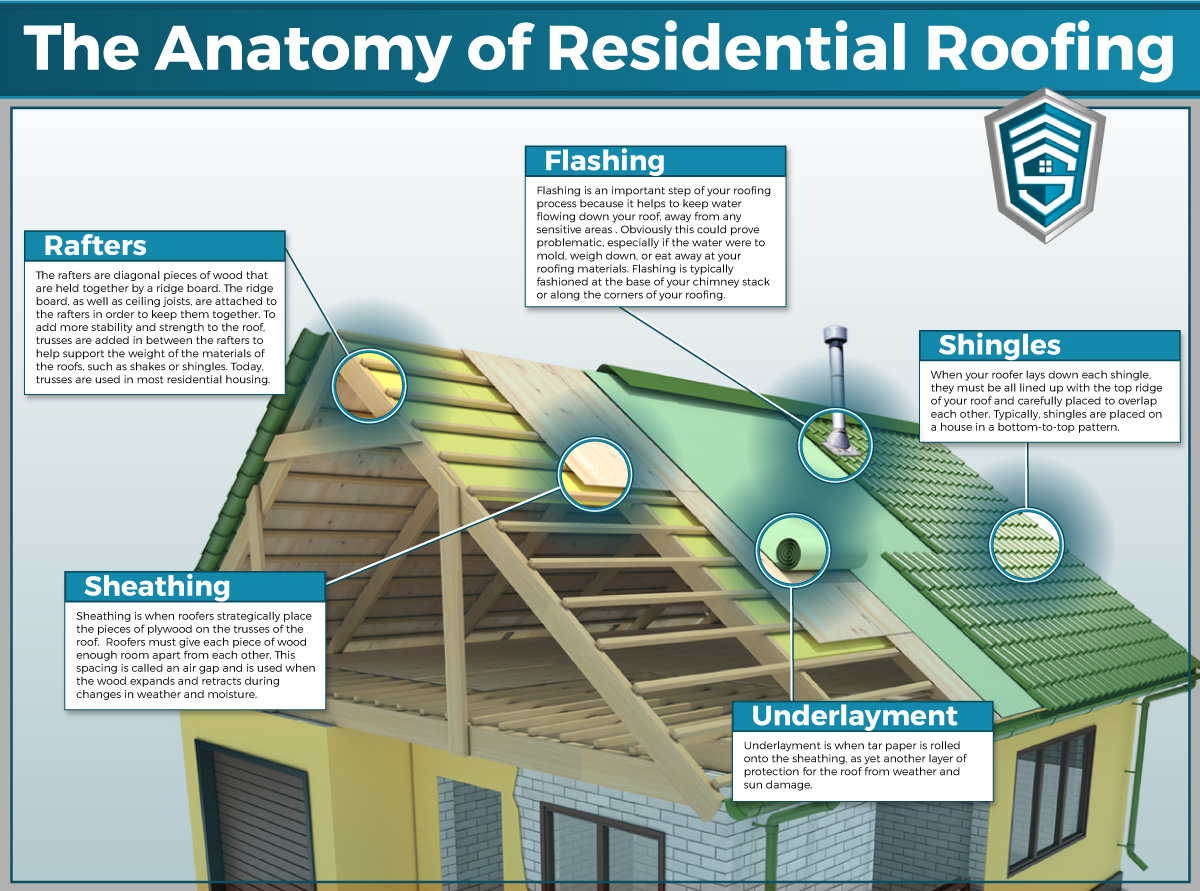Neglecting Roofing System Ventilation Can Sustain High Expenses In Repairs; Understand The Fundamental Elements That Make Sure Proper Installation And Secure Your Financial Passions
Neglecting Roofing System Ventilation Can Sustain High Expenses In Repairs; Understand The Fundamental Elements That Make Sure Proper Installation And Secure Your Financial Passions
Blog Article
Article Writer-Hermansen Vogel
When you're tackling a roof job, you could not think much concerning roofing air flow, yet it's more vital than you understand. Efficient ventilation assists control temperature and moisture in your attic room, avoiding troubles like mold and mildew and structural damages. By comprehending just how to design and mount a well balanced ventilation system, you can enhance energy efficiency and prolong the life-span of your roof covering materials. So, what are the essential variables to take into consideration throughout installation that can make all the distinction?
Significance of Roof Air Flow
Roofing system ventilation plays a crucial function in preserving the total health of your home. By enabling fresh air to circulate through your attic room, it assists manage temperature level and moisture levels. This equilibrium is important to avoid warm buildup during hot months, which can lead to enhanced energy expenses as your air conditioning works overtime.
Additionally, proper air flow considerably reduces the risk of moisture-related problems like mold and mildew and mildew. If humidity degrees increase, your home's architectural integrity can be endangered, causing pricey repair work. You wouldn't want to manage deteriorating timber or warped roof products, right?
In addition, appropriate ventilation extends the life expectancy of your roofing system. When warm and wetness are kept in check, your roofing can perform optimally, stopping early damage. This means fewer frustrations and expenditures down the line.
Exactly How Roofing Ventilation Functions
Effective roofing air flow counts on the natural motion of air to create a balance between consumption and exhaust. When you mount vents, you're basically permitting fresh air to enter your attic room while making it possible for warm, stale air to escape. This procedure assists regulate temperature level and wetness levels, protecting against concerns like mold growth and roofing damages.
Consumption vents, typically discovered at the eaves, attract great air from outdoors. On the other hand, exhaust vents, situated near the ridge of the roofing system, allow hot air surge and departure. The distinction in temperature level creates an all-natural air movement, referred to as the pile result. As warm air rises, it produces a vacuum cleaner that draws in cooler air from the reduced vents.
To maximize gutter guard micro mesh san antonio , you require to ensure that the consumption and exhaust vents are properly sized and placed. If https://metal-roofing-supplies51739.blogrenanda.com/40237584/reveal-the-means-to-detect-normal-roofing-problems-that-may-exist-in-your-house-what-should-you-do-if-you-find-something-alarming is restricted, you won't achieve the wanted ventilation.
Furthermore, inadequate exhaust can trap warm and dampness, causing possible damage.
Trick Installation Factors To Consider
When installing roofing system air flow, numerous crucial considerations can make or break your system's efficiency. First, https://metal-roofing-supplies52739.thelateblog.com/34445491/stay-clear-of-the-burden-of-pricey-repairs-with-regular-roof-covering-maintenance-reveal-essential-strategies-that-can-improve-the-defense-of-your-home-past-your-expectations need to examine your roofing's design. The pitch, shape, and products all affect air flow and air flow choice. Make sure to pick vents that fit your roofing system kind and local climate conditions.
Next, consider the positioning of your vents. Preferably, you'll desire a well balanced system with consumption and exhaust vents positioned for optimum air movement. Location intake vents short on the roof covering and exhaust vents near the height to encourage an all-natural flow of air. This arrangement helps avoid moisture buildup and promotes energy efficiency.
Don't forget about insulation. Proper insulation in your attic room protects against heat from getting away and maintains your home comfy. Guarantee that insulation doesn't block your vents, as this can impede airflow.
Lastly, consider upkeep. Choose ventilation systems that are simple to accessibility for cleaning and examination. Routine upkeep guarantees your system continues to function properly with time.
Final thought
Finally, roof air flow is vital for a successful installation. By guaranteeing correct air movement, you can protect against warm accumulation and moisture problems that cause pricey damages. When you strategically position intake and exhaust vents, you enhance power effectiveness and lengthen the lifespan of your roofing system. Keep in mind, a well-ventilated roofing not just protects your investment but additionally enhances your indoor air quality. So, prioritize air flow to make sure a resistant and affordable roofing system for your home.
